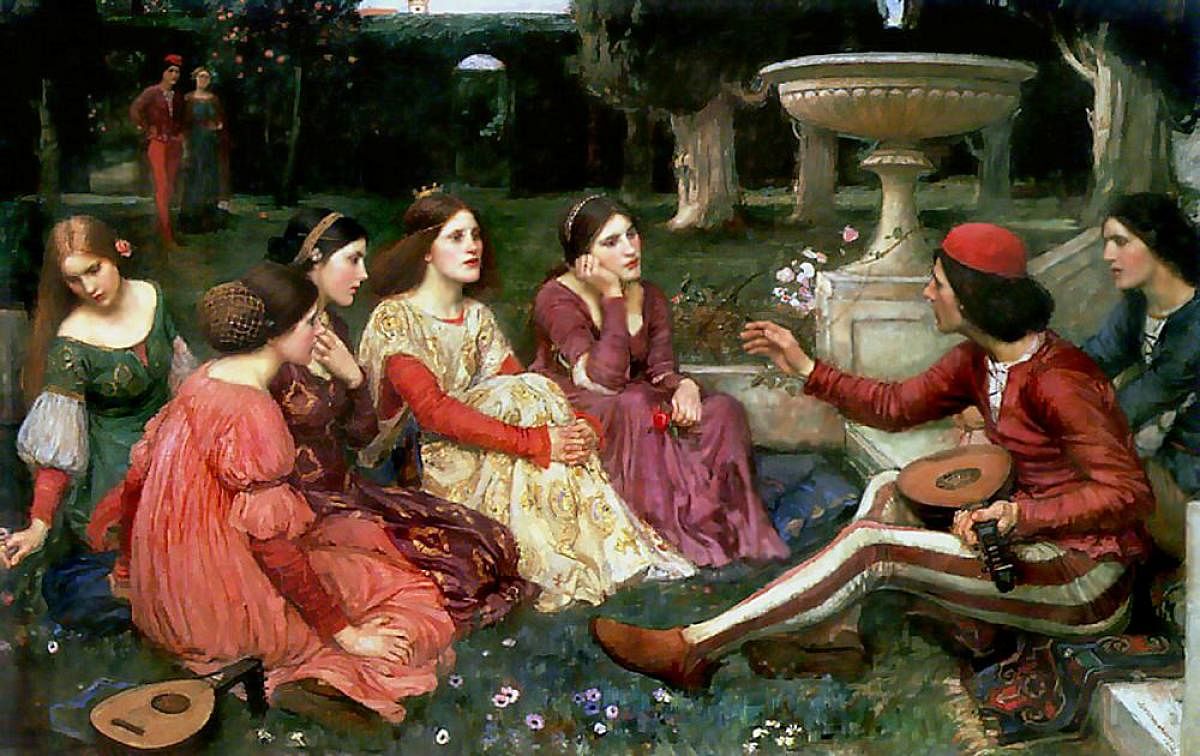
It is 1348. In Florence, the Black Death is wreaking havoc, the city’s residents are dying in the scores, and there seems to be no end in sight to the waves of disease. To escape the pestilence, a group of young Florentines escape to the countryside and hole up in a villa for 10 days. They pass the time telling stories — tales which push the bounds of conventionality and morality, losing any inhibitions they may have due to the imminence of death. These stories, and the framing device of young men and women in self-imposed exile, were the invention of Giovanni Bocaccio and were published as The Tales from the Decameron.
The main themes of the Decameron are love, lust and desire and the extent to which people would go to fulfil them — it’s not surprising that these would be the overarching concerns of young men and women who are facing an inescapable fate: death. The complete Decameron comprises 100 stories and was considered a scandalous, obscene book for centuries. But it was also a harbinger of what would become one of the great periods of artistic achievement, the Renaissance.
Bocaccio, born in 1313 to a Tuscan merchant in Paris, France, wanted to be a poet more than anything else. His father had no sympathy for his son’s artistic ambitions and overrode them, leading to a rather unhappy childhood spent in Florence. Eventually, young Giovanni was packed off to Naples to learn everything he could about commerce and law. In Naples, he got the opportunity to expand his worldview — interacting with scholars of the classics such as the poet Petrarch, the aristocracy, and the great trading houses and families of the middle ages.
He returned to Florence in 1340 after his father’s bankruptcy and went on to live a life of the artist, though on occasions an impoverished one. He wrote epic romances and poetry, and it is thought that over a five-year period between 1348-53, he composed the Decameron.
During the period of his return to Florence, the city and its surroundings had already experienced multiple waves of the plague.
These stories, which many consider jewels of classical Italian literature, are funny, bawdy and entertaining. The perfect yarns that only young, restless minds could conjure up to reflect on the nature of human desire.
As you read the stories of nuns and monks and priests merrily breaking their vows and secret lovers trying to escape enraged husbands, it is impossible not to think that in our day and age these protagonists would be perfect candidates for the horny jail meme. One of my favourite stories is narrated by the young woman Pampinea on the third day. It concerns a groom who’s carrying on a clandestine affair with the wife of King Agilulf of the Lombards. The king gets wind of the affair and follows the groom in the night after he’s leaving an assignation with the queen. The king shears off a lock of hair so he can catch the culprit the next morning — however, the groom has other ideas. The next morning, in the parade of servants, the king finds all of them have shorn locks of hair.
The Decameron has inspired writers and artists through the centuries. One of the best recent on-screen adaptations is Jeff Baena’s 2017 film, The Little Hours. For those who thought medieval works like the Decameron are relics of another age, films like Baena’s show how Bocaccio’s genius works no matter the medium. Works like his are classics for a reason — they get to the very root of what makes us human, and are thus timeless.
The author is a writer and communications professional. When she’s not reading, writing or watching cat videos, she can be found on Instagram @saudha_k where she posts about reading, writing, and cats.
That One Book is a fortnightly column that does exactly what it says — takes up one great classic and tells you why it is (still) great. Come, raid the bookshelves with us.